Volume 4, Issue 1
Displaying 1-17 of 17 articles from this issue
- |<
- <
- 1
- >
- >|
-
Article type: Cover
1999 Volume 4 Issue 1 Pages Cover1-
Published: February 25, 1999
Released on J-STAGE: July 28, 2017
Download PDF (1214K) -
Article type: Cover
1999 Volume 4 Issue 1 Pages Cover2-
Published: February 25, 1999
Released on J-STAGE: July 28, 2017
Download PDF (1214K) -
Article type: Appendix
1999 Volume 4 Issue 1 Pages App1-
Published: February 25, 1999
Released on J-STAGE: July 28, 2017
Download PDF (117K) -
Article type: Article
1999 Volume 4 Issue 1 Pages 1-2
Published: February 25, 1999
Released on J-STAGE: July 28, 2017
Download PDF (464K) -
Article type: Article
1999 Volume 4 Issue 1 Pages 3-6
Published: February 25, 1999
Released on J-STAGE: July 28, 2017
Download PDF (522K) -
Article type: Article
1999 Volume 4 Issue 1 Pages 7-12
Published: February 25, 1999
Released on J-STAGE: July 28, 2017
Download PDF (968K) -
Article type: Article
1999 Volume 4 Issue 1 Pages 13-16
Published: February 25, 1999
Released on J-STAGE: July 28, 2017
Download PDF (565K) -
Article type: Article
1999 Volume 4 Issue 1 Pages 17-22
Published: February 25, 1999
Released on J-STAGE: July 28, 2017
Download PDF (805K) -
Article type: Article
1999 Volume 4 Issue 1 Pages 23-28
Published: February 25, 1999
Released on J-STAGE: July 28, 2017
Download PDF (1037K) -
Article type: Article
1999 Volume 4 Issue 1 Pages 29-34
Published: February 25, 1999
Released on J-STAGE: July 28, 2017
Download PDF (947K) -
Article type: Article
1999 Volume 4 Issue 1 Pages 35-40
Published: February 25, 1999
Released on J-STAGE: July 28, 2017
Download PDF (744K) -
Article type: Article
1999 Volume 4 Issue 1 Pages 41-48
Published: February 25, 1999
Released on J-STAGE: July 28, 2017
Download PDF (1020K) -
Article type: Article
1999 Volume 4 Issue 1 Pages 49-52
Published: February 25, 1999
Released on J-STAGE: July 28, 2017
Download PDF (565K) -
Article type: Article
1999 Volume 4 Issue 1 Pages 53-60
Published: February 25, 1999
Released on J-STAGE: July 28, 2017
Download PDF (1251K) -
Article type: Appendix
1999 Volume 4 Issue 1 Pages App2-
Published: February 25, 1999
Released on J-STAGE: July 28, 2017
Download PDF (61K) -
Article type: Cover
1999 Volume 4 Issue 1 Pages Cover3-
Published: February 25, 1999
Released on J-STAGE: July 28, 2017
Download PDF (139K) -
Article type: Cover
1999 Volume 4 Issue 1 Pages Cover4-
Published: February 25, 1999
Released on J-STAGE: July 28, 2017
Download PDF (139K)
- |<
- <
- 1
- >
- >|
